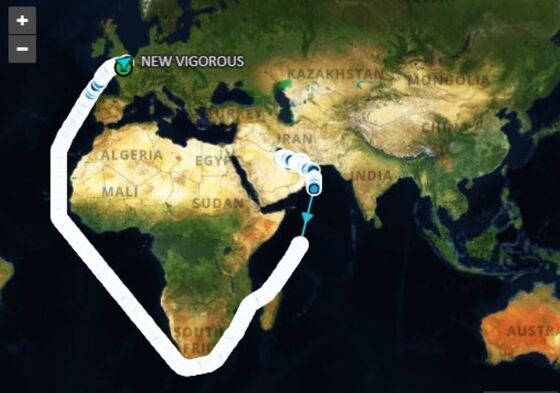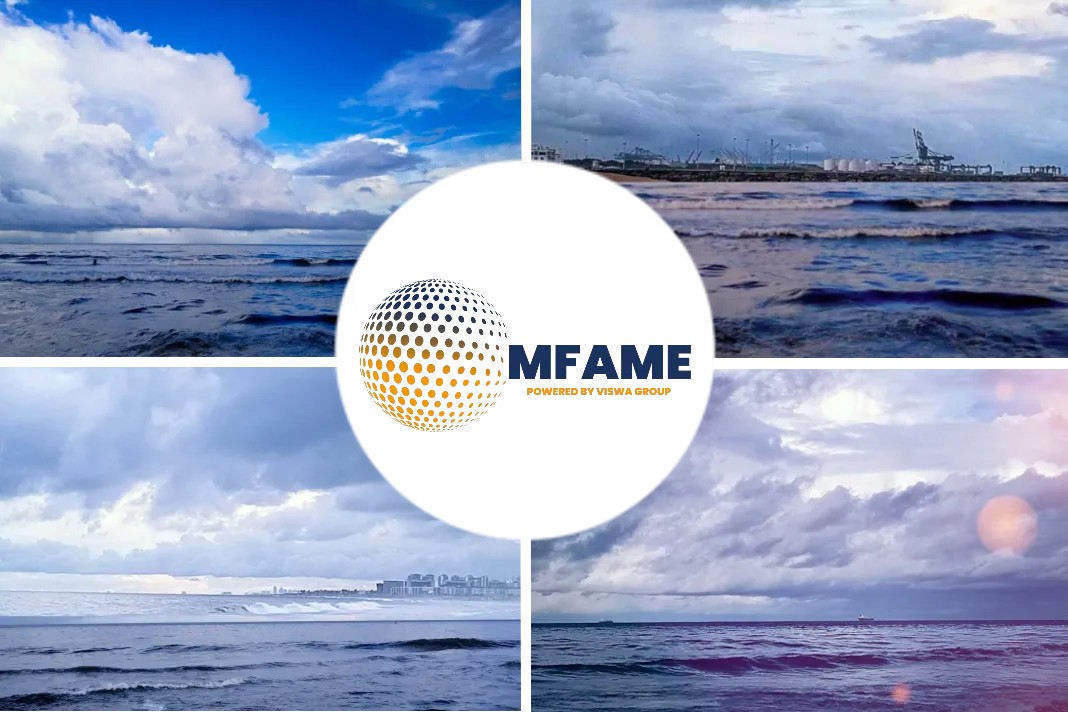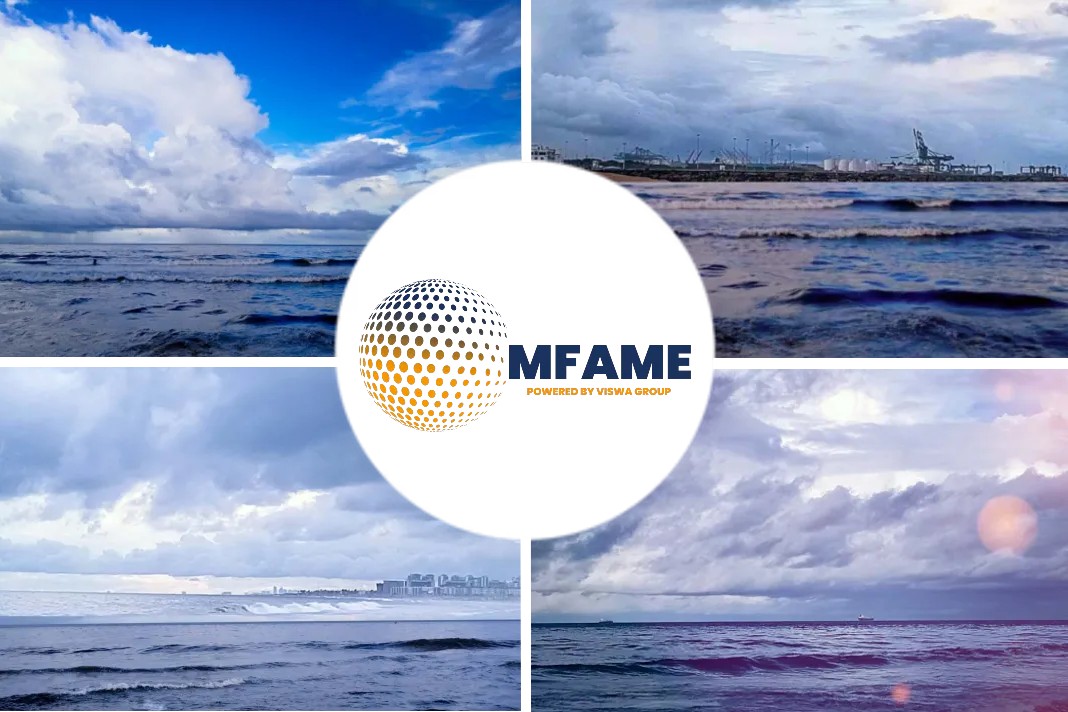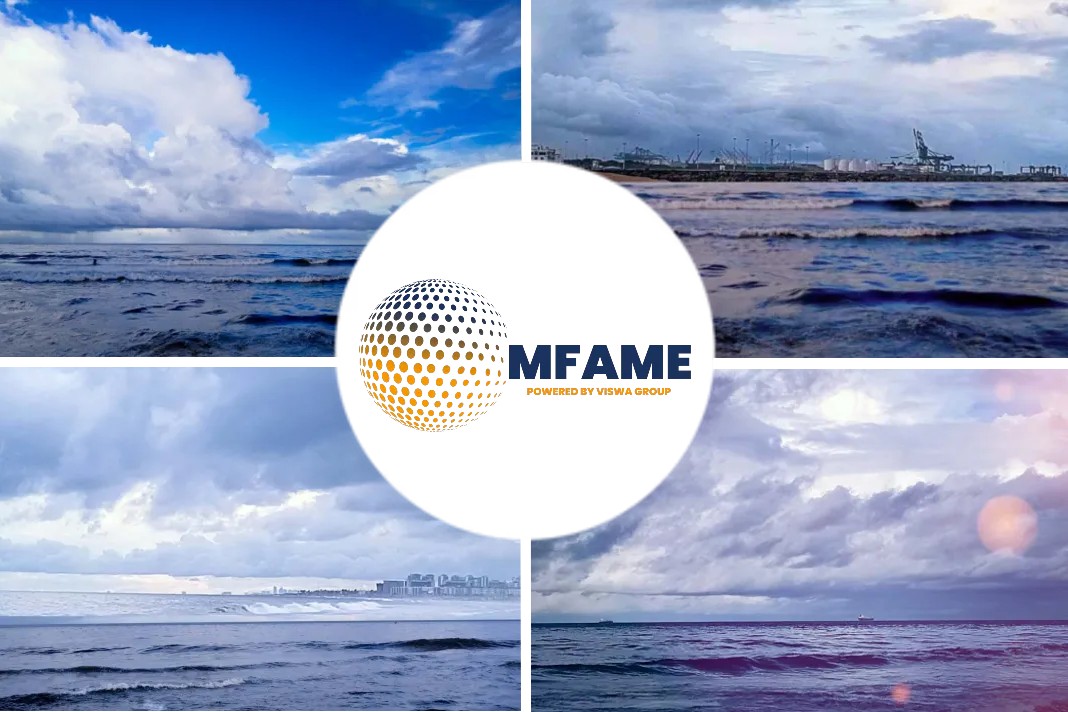- Supertanker New Vigorous arrived at a port in northern France Cape of Good Hope.
- The journey takes almost twice the time as the usual route through the Suez Canal.
- An increasing number of supertankers are taking the long route ahead.
- Tankers are piling up as suppliers deal with the largest glut the world.
- Storage options are running out with fuel at historically low prices.
- It is cheaper than canals where tolls can run into the hundreds of thousands of dollars.
- Suez canal temporarily increased the rebates for some ships but not for oil tankers.
According to an article published in Bloomberg Quint and authored by Brian Wingfield et al., when the supertanker New Vigorous arrived at the port of Antifer in northern France last Saturday, it made a small bit of maritime history.
Journey via Cape of Good Hope
The vessel, laden with 2 million barrels of crude, became the first in almost two years to make the voyage from Saudi Arabia to northwest Europe via South Africa’s Cape of Good Hope — a journey that takes almost twice the time as the usual route through the Suez Canal. Now at least two more supertankers are doing the same.
Ships favor the long route due to COVID-19
As the coronavirus pandemic turns the oil market on its head, it’s also sending shockwaves through the shipping industry. From California to Gibraltar, tankers have piled up as suppliers deal with the largest glut the world has ever seen and ports have become congested. With storage options running out, fuel at historically low prices and the value of cargoes almost certain to rise in the future, some ships are taking rare voyages, often prolonging their routes until more favorable conditions arise.
“Everyone is seeking to postpone the delivery of cargoes,” as storage fills up said Peter Sand, the chief shipping analyst at industry group BIMCO. “Right now, in combination with very low fuel prices, it does make sense to bring ships around the Cape of Good Hope.”

Two weeks after the New Vigorous set sail for France, another supertanker, the New Harmony, embarked on the same route around Africa, vessel-tracking data compiled by Bloomberg show. Two weeks after that, a third ship, the New Pioneer, did the same.
Slower demands
There are other sporadic instances of long-distance voyages. Oil tankers from Europe don’t normally sail around the tip of South America, but last month the Psara I did so on its way to delivering the first Norwegian crude to the U.S. West Coast in 11 years.
The Trident Liberty is the first-ever supertanker to load Kurdish crude at Ceyhan on Turkey’s Mediterranean coast and haul it, probably to China, around the coast of Africa. Cargoes to China normally move on smaller ships through the Suez Canal.
The precise motives of the moves aren’t known, but there are some well-known issues in the oil market that support slower deliveries. In Europe alone, the amount of crude in floating storage is now at a record 28.9 million barrels, according to ship-tracking firm Vortexa Ltd. At the same time, traders are grappling with a market condition known as contango, where near-term prices are lower than those further out. “Things have changed since the oil glut and wide contango started to dominate the markets,” said Burak Cetinok, head of research at Arrow Shipbroking Group in London.
Very limited space to discharge
Tankers used to speed up when laden with cargo and slow down when they were empty to save money on fuel charges, he said. Now, he’s seeing the opposite. “They’ve started slowing down when laden because there’s a very limited space to discharge, and wide contango makes the cargo more valuable at a later date.”
Round the Cape Perhaps nowhere is the effect of the market upheaval more obvious than in the voyage around the Cape of Good Hope. In addition to the three crude-laden vessels that have sailed the route in recent weeks, the oil-product tanker BW Triton has also gone around South Africa from an East-of-Suez origin, tanker-tracking shows. At least two others were initially bound for Europe but instead diverted to West Africa.
Maritime industry facing a tight market
“This is a tight market” for ships hauling oil products, said Lars Dencker Nielsen, commercial director of Scorpio Tankers Inc., on an earnings call Wednesday. The lack of vessels is enhanced by storage as well as congestion and operational constraints, and it’s “causing vessels to take longer routes, for example, vessels sailing around the Cape of Good Hope instead of transiting to Suez Canal.” That’s a significant increase in voyage distance and time, which limits tonnage supply, he added.
Supertankers are too big to pass through the Suez Canal with a full cargo, so they generally discharge at a pipeline terminal near the Red Sea end of the waterway and re-load once they reach the Mediterranean. For a voyage from the Persian Gulf to northwest Europe, the journey usually takes a little more than three weeks.
Low fuel cost and increased toll rate – a volatile combination
BIMCO’s Sand said that with fuel costs so low, it’s perhaps cheaper to avoid the canal — where tolls can run into the hundreds of thousands of dollars — even if the journey is longer. In recent weeks, the canal has temporarily increased the rebates it grants for some ships, though not for oil tankers.
“For the time being there isn’t any change in crude tankers’ fees,” said Suez Canal Authority spokesman George Safwat. “Once we notice any drop in the number of vessels, we’re open to all scenarios.”
Did you subscribe to our daily newsletter?
It’s Free! Click here to Subscribe!
Source: BloombergQuint
















Very shortly this site will be famous among all blogging viewers,
due to it’s nice articles or reviews I saw similar here:
Ecommerce
Great delivery. Solid arguments. Keep up the great effort.
I saw similar here: sklep online and also here: e-commerce
It’s very interesting! If you need help, look here: hitman agency
Wow, marvelous weblog structure! How long have you ever been running
a blog for? you made blogging look easy. The entire glance of your site is fantastic, as well as the
content material! You can see similar: e-commerce and here sklep internetowy